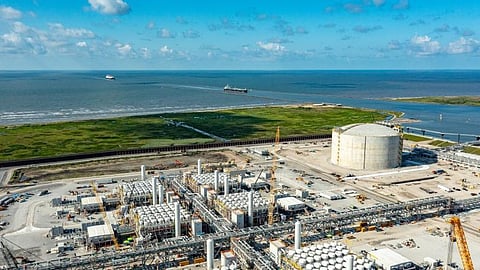US natural gas prices climb on heat forecast, smaller storage build
US natural gas futures edged up about one per cent on Thursday on a smaller-than-expected storage build and forecasts for the hottest weather in three years to blanket much of the country early next week.
That heat wave should cause power generators to burn more gas to meet soaring air conditioning demand.
Front-month gas futures for August delivery on the New York Mercantile Exchange rose 1.7 cents, or 0.6 per cent, to $3.094 per million British thermal units by 10:39 EDT (14:39 GMT). On Wednesday, the contract closed at its lowest since April 25, putting it in technically oversold territory for the first time since mid-May.
The US Energy Information Administration (EIA) said energy firms added 23 billion cubic feet of gas to storage during the week ended July 18. That was smaller than the 33-bcf build analysts forecast in a Reuters poll and compares with an increase of 20 bcf during the same week last year and an average of 30 bcf over the 2020-2024 period.
That build left stockpiles about six per cent above the five-year normal for this time of year.
Looking ahead, the premium of futures for September over August rose to a record high, a sign the market was giving up on hot summer weather in August that could cause gas prices to soar next month.
The US National Hurricane Center (NHC) said a tropical system in the Gulf of Mexico had a 10 per cent chance of strengthening into a tropical cyclone over the next week.
Even though Gulf storms can boost prices by knocking gas production out of service, analysts have noted that storms are more likely to cut demand and prices by shutting LNG export plants and knocking out power to millions of homes and businesses, which reduces the amount of gas that electric generators need to burn. That is because only about two per cent of all US gas comes from the federal offshore Gulf of Mexico.
LSEG said average gas output in the Lower 48 US states has risen to 107.3 billion cubic feet per day so far in July, up from a monthly record high of 106.4 bcfd in June.
On a daily basis, however, output was on track to drop to a preliminary two-week low of 106.2 bcfd on Thursday since hitting a daily record high of 108.5 bcfd on July 18. Analysts have noted that preliminary data is often revised later in the day.
Meteorologists forecast the weather in the Lower 48 would remain mostly hotter than normal through at least August 8. The hottest days of the summer are expected early next week.
Temperatures across the country will average around 82.4 degrees fahrenheit (28 degrees celsius) on July 28 and 82.8 degrees fahrenheit on July 29. If correct, that will exceed the summer's current hottest daily average of 80.3 degrees fahrenheit on June 24 but would remain just shy of the daily average record high of 83 degrees fahrenheit on July 20, 2022, according to data from LSEG going back to 2018.
LSEG forecast average gas demand in the Lower 48 states, including exports, will rise from 105.9 bcfd this week to 110.1 bcfd next week. Those forecasts were similar to LSEG's outlook on Tuesday.
The average amount of gas flowing to the eight big US LNG export plants rose to 15.7 bcfd so far in July, as liquefaction units at some of the facilities slowly exited maintenance reductions and unexpected outages. That was up from 14.3 bcfd in June and 15 bcfd in May but remained below the monthly record high of 16 bcfd in April.
(Reporting by Scott DiSavino; Editing by Paul Simao and Marguerita Choy)


